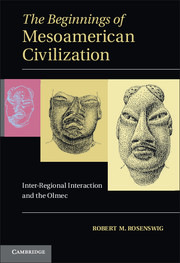Book contents
- Frontmatter
- Contents
- Figures
- Tables
- Acknowledgments
- SECTION I AN EARLY FORMATIVE MESOAMERICAN PROBLEM
- SECTION II ARCHAEOLOGICAL DATA
- 4 Settlement Patterns and Architecture
- 5 Diet, Food Processing and Feasting
- 6 Representation and Aesthetics
- 7 Inter-regional Exchange Patterns
- SECTION III DERIVING MEANING FROM THE ARCHAEOLOGICAL RECORD
- 9 Conclusion
- Appendix 1 Temporally secure excavation contexts at Cuauhtémoc with detailed ceramic data
- Appendix 2 Temporally secure excavation contexts at Cuauhtémoc without detailed ceramic data
- References Cited
- Index
6 - Representation and Aesthetics
Published online by Cambridge University Press: 26 February 2010
- Frontmatter
- Contents
- Figures
- Tables
- Acknowledgments
- SECTION I AN EARLY FORMATIVE MESOAMERICAN PROBLEM
- SECTION II ARCHAEOLOGICAL DATA
- 4 Settlement Patterns and Architecture
- 5 Diet, Food Processing and Feasting
- 6 Representation and Aesthetics
- 7 Inter-regional Exchange Patterns
- SECTION III DERIVING MEANING FROM THE ARCHAEOLOGICAL RECORD
- 9 Conclusion
- Appendix 1 Temporally secure excavation contexts at Cuauhtémoc with detailed ceramic data
- Appendix 2 Temporally secure excavation contexts at Cuauhtémoc without detailed ceramic data
- References Cited
- Index
Summary
In the case of the arts, it is well known that certain periods of their flowering are out of proportion to the general development of the society, hence also to the material foundations, the skeletal structure, as it were, of its organization.
Marx 1973 [1857–1858]: 110The other side of the historical materialist dialectic “…includes social, religious, legal, and aesthetic institutions, beliefs, and conventions” (Childe 1946: 250). On first reading the epigraph above, one notes that Marx does not appear to attribute a causative role to artistic expression. Rather, he is puzzled by the lack of correspondence between such development and society's material foundations during certain periods. He does note, however, that the elaboration of artistic expression (and by extension the superstructure more generally) can operate independent of society's economic base. Although it is possible to marshal passages in Marx's writing to support their position that the superstructure is epiphenomenal, such a simplification ignores the nuances of his thinking (Roseberry 1989: 37–42). Marx viewed the human brain, and ability for abstract thought, as distinguishing humans from other organisms. He famously stated in Capital that:
A spider conducts operations which resemble those of the weaver, and a bee would put many a humble architect to shame by the construction of his honeycomb cells. But what distinguishes the worst architect from the best of bees is that the architect builds the cell in his mind before he constructs it in wax. At the end of every labor process, a result emerges which had already been conceived by the worker at the beginning, hence already existed ideally.
Marx 1977[1867]: 284- Type
- Chapter
- Information
- The Beginnings of Mesoamerican CivilizationInter-Regional Interaction and the Olmec, pp. 175 - 226Publisher: Cambridge University PressPrint publication year: 2009



